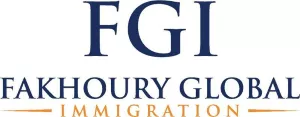On Tuesday, October 6, 2020, the U.S. Department Homeland Security (DHS) and the U.S. Department of Labor (DOL) issued two Interim Final Rules (IFRs) that introduce significant changes with respect to the H-1B, H-1B1, E-3 visa programs, and to the wage levels in connection with these programs and the PERM Labor Certification program. The DHS rule is entitled, "Strengthening the H-1B Nonimmigrant Visa Classification Program," and introduces specific changes to the H-1B program that will take effect on December 7th, 2020 - sixty (60) days after the date published. The DOL rule is entitled, "Strengthening Wage Protections for the Temporary and Permanent Employment of Certain Aliens in the United States" and increases the wage levels that are required to be paid to certain nonimmigrant workers. This DOL rule took effect on Thursday, October 8, 2020.
The new rules are the latest restrictions the Trump Administration has imposed on nonimmigrant visa programs. Many of the specific restrictive changes included in the DHS rule are ones that the Administration has said that it intended to advance since late 2017.
If both rules are allowed to stand, the changes to the H-1B, H-1B1, E-3 visa programs and the PERM certification program will be profound. Acting USCIS Director Ken Cuccinelli told the press that he anticipates that the changes would impact a third of cases that had previously been approved. It is anticipated that these rules will be challenged in court on both procedural and substantive grounds.
Here are summaries of the two rules:
DHS Rule
Revises the definition of the term 'specialty occupation'
- Claiming that the decades of interpretation of specialty occupation is inconsistent with the statute, the rule revises and significantly narrows the regulatory definition of, and standards for, what qualifies as a "specialty occupation."
- Currently an H-1B, H-1B1, E-3 petitioning employer has to establish that the foreign worker holds "theoretical and practical application of a body of highly specialized knowledge" and "attainment of a bachelor's or higher degree in the specific specialty." Under the new definition, the H-1B, H-1B1, E-3 petitioning employer will have the burden "of demonstrating that there is a direct relationship between the required degree in a specific specialty (in other words, the degree field(s) that would qualify someone for the position) and the duties of the position."
- The IFR greatly narrows the degree requirements to support a specialty occupation determination. Under the new rule:
- The educational degree of the foreign national must be directly related to the proffered H-1B, H-1B1, E-3 position. Employees with general degrees, without further specializations, will generally not qualify for the H-1B, H-1B1, E-3 categories.
- The H-1B, H-1B1, and E-3 employer must also prove that the position requires a directly related specialty degree to perform the duties.
- The IFR removes the words 'normally,' 'common' and 'usually' from the regulatory criteria. Currently, the H-1B rules state that a degree is a common requirement for the proposed occupation, but not a universal requirement.
- The IFR indicates that the H-1B, H-1B1, E-3 petitioning employer will need to establish that the bachelor's degree in a specific specialty or its equivalent is a minimum requirement for entry into the occupation by showing that this is always the requirement for the occupation as a whole, the occupational requirement within the relevant industry, the petitioner's particularized requirement, or because the position is so specialized, complex, or unique that it is necessarily required to perform the duties of the specific position.
- The IFR explicitly states that general engineering degrees will not satisfy the specialty requirement for technology positions in the H-1B, H-1B1 or E-3 categories, nor would other general degrees for other occupations.
- The rule change requires that the petitioning employer provide evidence of a bona fide, non-speculative job offer. In addition, the new rule requires the petitioning employer provide corroborative evidence that the foreign national has work at a third-party location.
Revises the definition of the term 'employer-employee relationship'
- Revises the definition of the term 'employer-employee relationship' which may restrict certain companies from being able to sponsor foreign nationals for the H-1B, H-1B1, and E-3 categories that were able to sponsor foreign nationals in the past.
- Compared to the current practice in which a determination of "employer-employee relationship" could be based upon the H-1B, H-1B1, E-3 petitioning employer establishing an employer's right to control the foreign national's employment, the new rule states that the USCIS will "assess and weigh all relevant aspects of the relationship" and that DHS "does not believe that any one factor should be decisive." This means that a petitioning employer may face added scrutiny and may be required to provide more documentation to support their H-1B, H-1B1, or E-3 petition filing. USCIS is likely to scrutinize the employer-employee relationship with respect to all H-1B petitions, including those petitions in which the foreign national will work at the sponsoring employer's facility.
- The new definition will consider the following eleven (11) factors in determining whether a valid employer-employee relationship exists:
(i) whether the petitioner supervises the beneficiary and, if so, where such supervision takes place;
(ii) where the supervision is not at the petitioner's worksite, how the petitioner maintains such supervision;
(iii) whether the petitioner has the right to control the work of the beneficiary on a day-to-day basis and to assign projects;
(iv) whether the petitioner provides the tools or instrumentalities needed for the beneficiary to perform the duties of employment;
(v) whether the petitioner hires, pays, and has the ability to fire the beneficiary;
(vi) whether the petitioner evaluates the work-product of the beneficiary;
(vii) whether the petitioner claims the beneficiary as an employee for tax purposes;
(viii) whether the petitioner provides the beneficiary any type of employee benefits;
(ix) whether the beneficiary uses proprietary information of the petitioner in order to perform the duties of employment;
(x) whether the beneficiary produces an end-product that is directly linked to the petitioner's line of business; and
(xi) whether the petitioner has the ability to control the manner and means in which the work product of the beneficiary is accomplished.
Revises the definition of the term "United States Employer"
- Replaces the word "contractor" with the word "company". The DHS argues that the current regulatory language suggests that contractors should qualify as U.S. employers. The new rule will require that contractors must establish an "employer-employee relationship" with the H-1B beneficiary. The DHS claims that it is more difficult to assess the employer-employee relationship between H-1B beneficiaries and contractors as these often involve assigning the beneficiary to third-party work locations. This rule change will have a significant impact on major staffing companies who are contracted to provide H-1B, H-1B1, and E-3 skilled talent to U.S. companies.
Changes the validity period for H-1B, H-1B1, E-3 petitions for employees placed at third-party work sites
- The rule for the first time would distinguish between types of worksites and impose new restrictions on those involving third-party worksites. It limits the validity period for third-party placement petitions to a maximum period of one year.
- For H-1B dependent employers, the new rule is especially onerous given that the USCIS recently issued a revised fee schedule (currently under a federal court injunction) which requires, in addition to paying the $4,000 PL 113-114 filing fee for a new H-1B petition, the employer will now have to pay $4,000 for every extension petition filing. This means that, should the new USCIS fee schedule take effect at some point in the future, and the one year period of employment rule (for placement of an H-1B worker at a third party work location) remains in place, an H-1B dependent employer that needs to place an H-1B worker at a third party work location will have to pay thousands and thousands of dollars more than in the past ($12,000 as compared to $4,000) in order to maintain that H-1B employee in the U.S. for just a three-year period.
- When a foreign national is to be placed at a third-party worksite, the H-1B, H-1B1, and E-3 employer will be required to submit evidence such as contracts, work orders, or other similar evidence to establish that the beneficiary will perform services in a specialty occupation at the third-party worksite(s).
- The rule increases the oversight and investigatory authority of the agencies, so that there may be more scrutiny, site visits, and possible higher rates of petition denial, especially in cases involving placement of H-1B workers at third-party work locations.
- The rule likely will result in a general increase in the number of H-1B extension petition filings, which will add increased costs to many U.S. companies, especially those U.S. companies that place workers at third party work locations.
DOL REGULATORY REVISIONS
Changes prevailing wage requirements
- Increases the Occupation Employment Statistics (OES) wage amounts used by U.S. employers to determine the prevailing wage level for the H-1B position. Before an H-1B, H-1B1, E-3 petition is filed with the U.S. Citizenship and Immigration Services (USCIS), the U.S. sponsoring employer is required to file a Labor Condition Application (LCA) with the U.S. Department of Labor (DOL) and indicate the wage level and occupation category for the position. (Note: These prevailing wage levels also apply to PERM labor certification program.) The increase in the prevailing wage levels by the DOL, result in H-1B employers to pay much higher wages to H-1B, H-1B1, E-3 workers than in the past.
- The changes to four prevailing wage levels are as follows:
- Wage Level I has increased from 17% to 45%;
- Wage Level II has increased from 34% to 62%;
- Wage Level III has increased from 50% to 78%;
- Wage Level IV has increased from 67% to 95%.
- These new wage levels will pose a harsh burden on many employers, but could do particular harm to start-up companies and smaller firms that are in need of skilled talent that are not flush with cash and are operating in fields where unemployment remains exceptionally low. Some estimate that the new rule will increase prevailing wages for certain positions by as much as 40%.1 These new wages levels will also hinder rural health care providers from hiring physicians from abroad due to the higher salary levels.
- The new wage level data will be applicable to any Labor Condition Applications (LCAs) that were pending on or filed on or after October 8, 2020. LCAs already approved before October 8, 2020 are still valid, and no changes need to be made unless there is a new LCA that needs to be filed to document changes in the H-1B employment.
- The new wage level will not only impact new H-1B petition filings, but also affect H-1B, H-1B1, and E-3 extension petition filings. Employers will be forced to file an extension petition with the new, higher, wage levels with the DOL. The OES has, as of this writing, not listed wage data for certain occupations, meaning that employers will have to file petition with the default wage levels.2
- Many employers will probably consider using private wage surveys when filing their H-1B, H-1B1, and E-3 petition filings, than have in the past, since the cost to proceed with a petition filing using the new OES wage data is not feasible from a cost perspective.
As indicated above, we anticipate that both the DHS and the DOL rule changes will be challenged in federal court.
Footnotes
2. http://blog.cyrusmehta.com/2020/10/killing-the-h-1b-visa-also-kills-the-us-economy.html
The content of this article is intended to provide a general guide to the subject matter. Specialist advice should be sought about your specific circumstances.



